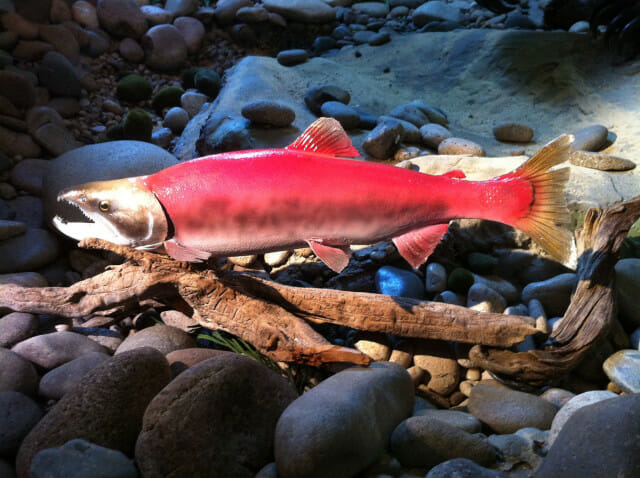By Chris Wood
When it comes to the recovery of imperiled salmon and steelhead, Idaho leads the way.
The Idaho Statesman was the first daily newspaper to call for the removal of the four lower Snake River dams in 1997. The late Governor, Cecil Andrus was one of the most articulate voices for recovery of Idaho’s salmon and steelhead. Senior Senator Mike Crapo said he was open to dam removal in 2009, and his colleague Senator Jim Risch, called for the creation of a forum where proponents of the status quo and dam removal advocates could try and work out their differences outside of court.
Lately, it is Rocky Barker and Ali Rizvi, and their series on the continued decline of the Snake River stocks of salmon and steelhead. There is little question of the state’s leadership on the issue of salmon recovery. And, importantly, there is still time to save these magnificent fish and rebuild them to healthy, fishable levels.
Back in the early 1990s, we used to talk about salmon recovery in the context of the 4H’s: hydropower, hatcheries, habitat loss, and harvest. But when it comes to the upriver stocks of salmon and steelhead that traverse to Idaho to spawn, not all of the H’s are created equal. The hydropower dams and hot, slack-water, predator-filled reservoirs they create are by far the biggest threat to the persistence of Idaho’s wild salmon and steelhead.
Hatcheries both mask and exacerbate the decline of the wild stocks. Fish reared in concrete tanks and then released into the wild now comprise more than 80 percent of all of the salmon and steelhead in the Snake River system. Fish-chow fed hatchery fish are poor substitutes for their wild counterparts. They survive at much lower rates than wild fish. They compete with wild fish for food and habitat. They spread disease. And, they diminish the genetic integrity of wild fish by interbreeding with them.
How do we make the Snake Rivers system healthy and intact for salmon? Independent biologists say we have to remove the four Snake River dams. This issue has been the source of continued litigation for more than 20 years. The most recent court ruling threw out the federal government’s latest “recovery plan” and said they must consider dam removal as an option.
Wild fish advocates are winning in court but losing in the river. Warming air temperatures and drought have turned the slack-water reservoirs behind the dams into lethally-warm bathtubs.
Recovery will begin when wild fish advocates become equally passionate about ensuring that removal of the four Lower Snake River dams does not cause socio-economic dislocation. Recovery will take place when dam proponents realize that salmon recovery will provide an economic shot in the arm for dozens of rural communities. Recovery will take place when our elected leaders realize that spending $15 billion and not addressing the most pressing problems with the hydropower dams is a colossal waste of money. Rocky’s excellent series demonstrates that we can still recover the Snake River’s wild salmon and steelhead, but only if we are willing to help one another help the fish.
Chris Wood is the president and CEO of Trout Unlimited. He works from our Arlington, Va., headquarters.



